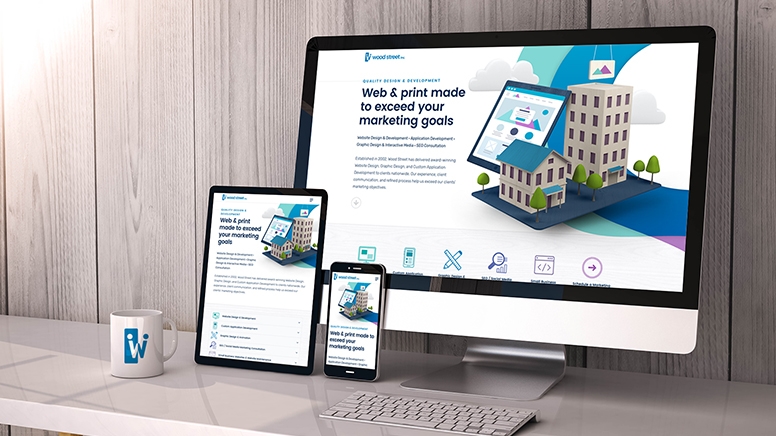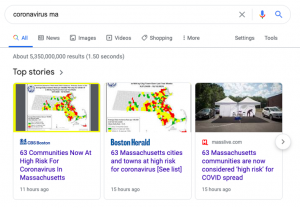
As you take stock of the year and look back on all of your marketing efforts, now is a good time to take a hard look at your website.
Your website is many things:
- Your virtual sales department
- The hub of your marketing and communications outreach
- An information portal
- A data capturing vehicle
- Customer service support channel
And the list could go on. The importance of a website cannot be overstated. This might explain why companies are loading their websites with tons of information…
- Sales and marketing messaging
- Product and/or service overviews and resource materials
- Company history, mission, staff, etc
- Blog, video, and podcast content
- White papers, eBooks, and presentations
This is all great stuff and should be considered when putting together your website materials. It’s the presentation and quality of this content where things can fall apart.
Website Presentation – What Does Your Audience Need?
They Need Education, Validation, and Inspiration
Every article about digital marketing, specifically regarding websites, will inevitably stress the importance of content. Content marketing is what we’re talking about here.
Education as Content Marketing
The Content Marketing Institute (yup, it has its own institute) defines content marketing as…
“Content marketing is a strategic marketing approach focused on creating and distributing valuable, relevant, and consistent content to attract and retain a clearly-defined audience — and, ultimately, to drive profitable customer action.”
Driving profitable customer action is what I want to focus on here, because, let’s face it, you need to worry about the bottom line.
Your boss doesn’t want to hear about brand awareness or positive customer sentiment (although these things can be important). Nope, she wants to hear good numbers, sales, conversions, whatever your website goals may be.
Use content to educate your audience so they are better able to make purchasing decisions they feel good about. Educate them so they can become brand ambassadors who spread the word about your organization.
Websites Are for Validation and Inspiration
They’re also looking for validation. Validation that your website is where they’re supposed to be, and validation that your product or service is exactly what they want or need. They want to trust you before they tell the world about you.
And they want to be inspired. You can no longer pitch a product and hope it sells. Generation Z and the millennial’s want to be a part of something. Your content should inspire them to not only buy but also to join your “movement.”
What is your movement? That’s for you to decide. Whatever it might be, every organization needs a set of values and a mission to support, promote, and maintain those values.
Your Website Should Come with a Tour Guide
Your audience needs you to guide them along the path to conversion while giving them a sense of validation and belonging.
That’s why those links along the top or side of your website are called navigation. It’s those things and other site elements that help the user to navigate their way through the pages and content of your website.
Website navigation is very important and should be given a good deal of thought, so much so that we wrote an entire blog post about website navigation.
But navigation is no longer enough. It used to be that you would have those links along the top and content in the body and all was right with the world.
Busy Three-Year-Olds on Smartphones
Nowadays, your typical website visitor will have these or similar characteristics…
- They’re busy, or at least think they are
- They have the attention span of a three-year-old (not an insult, just a reality… squirrel!)
- These users are on mobile devices, laptops, desktops, tablets, watches, shoes, glasses (it’s a friggin spy movie out there)
- They no longer read, they scan
We have busy, scanning three-year-olds, jumping from device to device while looking at your content. Do you still think people are reading those long blocks of text on your homepage?
So, how do you combat this serious attention deficit disorder your website audience is suffering from? Get to the point and make everything as scannable as possible.
Generation Z, Welcome to Instabrain
In a book titled InstaBrain: The New Rules for Marketing to Generation Z author Sarah Weise talks about studies done with generation z’ers, those born between 1995 and 2014.
In these studies, participants were observed while they used the internet in various ways. This could be anything from looking for a product to scrolling through their Instagram feed.
At first, it seemed that all they did was scroll, barely scanning the information in front of them. And the majority of the time they were on their smartphone. Initially, the observer would note how they seemed to be wasting time scrolling with no real purpose.
But, then something interesting happened. When something caught their attention, they would do a deep dive. They might do a deep dive into a new musical artist they stumbled upon or an exhaustive study of a new product they’re considering buying.
The takeaway here is that what might look like them wasting time, is actually them searching for inspiration.
So, while I am telling you that no one will read your long-winded homepage copy? I am saying that, when inspired, your audience will do a deep dive into your content to find out as much as they can about you your products, services, etc.
A Website that Converts
Website conversion literally means the point when a user takes an action that aligns with your marketing or sales goals. Conversion can be any or all of the following…
- Buying a product
- Subscribing to a service
- Signing up for an email newsletter
- Joining a cause
- Signing a petition
Achieving conversion goals means two things are happening…
- You’ve clearly outlined the targeted goals for your website
- Your site is designed and presented such that it leads users to take an action that is aligned with the goals outlined in step one
It’s simple. So, why do so many marketers struggle to get the kinds of conversion numbers they want? They’re getting in their own way.
UX is Your Secret Conversion Ingredient
Discussion around conversion goals tends to focus on having good calls to action. These are graphical elements like links, buttons, or forms that drive action on the part of the user.
But loading your website with buttons is certainly not the answer. Things get noticed when they have the space around them to stand out. A website’s design should contain ample whitespace such that these calls to action are easily noticed and thereby acted upon.
That’s not the end of it though. If you have whitespace and eye-catching buttons, you may still be missing the motivation and encouragement to take that action.
- Why are they on your website?
- What does your website mean to them?
- How does each page fit into their journey?
UX and The User Journey
We’re talking about UX or user experience here. This is how you understand and plan for the why of the conversion. Take the time needed to understand your target audience.
- Who are they?
- What is their environment like?
- Do you know what they need from you?
- How does that align with what you need from them?
- What sort of website experience would result in action based on knowing the answers of 1-4?
Then, once you have an idea of what that experience looks like, map out the user’s journey.
- Where are they coming from?
- What is their primary goal/need?
- How can you guide them along a conversion path without losing their interest?
Mapping this user journey will help you to eliminate the superfluous materials that simply gets in the way. And this user journey will give you a better understanding of the content materials that you really need instead of what you “think” you need.
Write and design for this user journey. Map out this journey using wireframes, prototypes, and smart sitemaps. These materials will then illuminate the areas of content you need.
This should be content that educates, validates, and inspires at just the right moment. The rest of the content is unnecessary. Seriously.
This extraneous content only makes your website busy. Focused content that aligns with your user’s journey through education, validation, and inspiration drives conversion.
Focus your marketing and content efforts on what moves the needle. Do this and you will save time, save money, and meet your goals!
Digital & Social Articles on Business 2 Community
(49)







